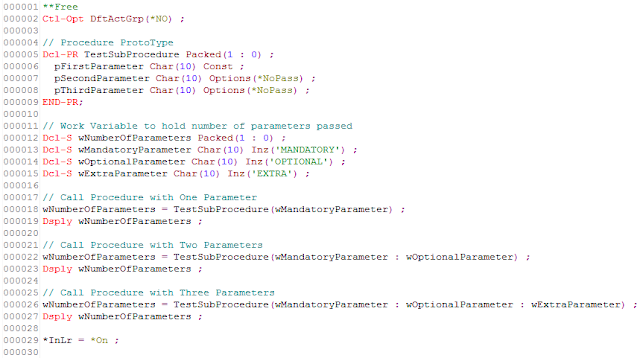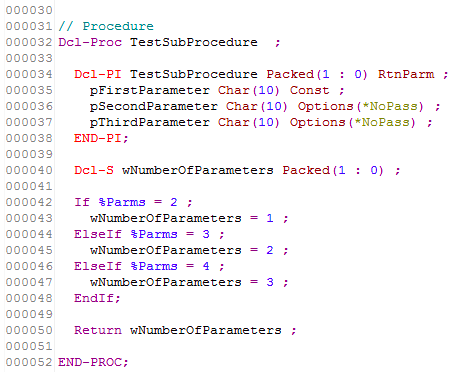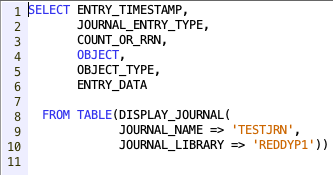Return Number of Parameters (%PARMS) and Parameter Number (%PARMNUM) - IBM i
Return Number of Parameters (%PARMS)
Built-In Function %PARMS returns the number of parameters passed to the procedure where %PARMS is run.
This BIF is useful when the procedure contains multiple optional parameters and if the procedure is called from different places with different number of parameters to identify the number of parameters passed.
This is most commonly used to to handle the procedure logic based on the parameters passed only.
Value returned by %PARMS is same as *PARMS in Program Status Data Structure if used in the main procedure.
Let's have a look at the simple example to see how this works.
- Lines - 5 to 9: Prototype declaration of the Sub procedure with one mandatory parameter, two optional parameters and one return value. We will see the code of procedure in a bit.
- Line - 18, 22 & 26: Calling the sub procedure with one mandatory parameter, two parameters and three parameters respectively.
- Lines 42 & 44: We are using %PARMS to determine the number of parameters passed.
This is often used to handle the parameters (like initializing or making sure these aren't used in the logic etc) that are not passed and make sure the procedure works as expected.
One thing to note here here, If the RTNPARM keyword is used return parameter would be considered as one of the (first) parameter and total number of parameters would be increased by 1.
In the above example, If only one parameter is passed, %Parms would be 2 (by considering the return parameter).
- Line - 34: We are using RTNPARM keyword against the Procedure Interface. The same would need to mentioned in the Prototype as well.
- Lines - 42, 44 & 46: We are using %PARMS to check the number of parameters by considering the return parameter.
- %PARMS would be 2 if only one parameter is passed.
- %PARMS would be 3 if two parameters are passed.
- %PARMS would be 4 if three parameters are passed.
Return Parameter Number (%PARMNUM)
Built-In Function %PARMNUM returns the number of the parameter passed from the parameters list.
Operand for this BIF should always be the parameter specified in the procedure interface.
Below are the few important points to remember.
- %PARMNUM can only be used with the parameters defined in Procedure Interface (PI) and Parameter defined using PLIST cannot be used.
- Parameter Name must be specified as it is defined in the PI.
- If the parameter is an array, Array should be used and not an Index.
- If the parameter is a data structure, Data structure should be used and not subfields.
- If the parameter is a file, File should be used and not record format.
- If RTNPARM is used, Return value is considered as the first parameter and the other parameters would be considered next.
- Line - 34: Procedure Interface is defined without RTNPARM.
- Lines - 43, 46 & 49: %PARMNUM is used to get the parameter number passed.
- Only Parameter names from the Procedure Interface are to be used.
- Line - 52: %PARMS is used to return the total number of parameters passed.
Similar to %PARMS, If we use RTNPARM total number of parameters would be increased by 1 and parameter number also would be increased by 1 as the return value is considered as first parameter.
Let's add RTMPARM to the above procedure.
By adding RTNPARM to the Procedure Interface, Number of the parameter and total number of parameters passed are increased by 1.
If you have any Suggestions or Feedback, Please leave a comment below or use Contact Form.








Comments
Post a Comment